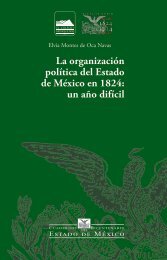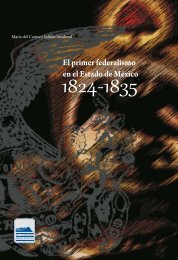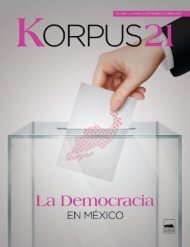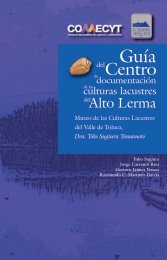Create successful ePaper yourself
Turn your PDF publications into a flip-book with our unique Google optimized e-Paper software.
KORPUS <strong>21</strong>, VOL. 4, NÚM. <strong>10</strong>, 2024, 113-126<br />
together. However, it did not seem difficult to<br />
decipher their central messages. We knew both<br />
genres and their repeated scripts. Pepe noted<br />
the valor, science, and adventure championed<br />
by Flash Gordon, Superman, Captain Wonder,<br />
Tarzan and Jane, the tenderness and protection<br />
that comforted the children as they watched<br />
Snow White cared for by the dwarves and Cinderella<br />
rescued by a prince, or Pepe El Toro (Pedro<br />
Infante) crooning sweetly to his girlfriend.<br />
Pepe remembered how the children crouched<br />
in terror at the enemy: King Kong, the evil emperor<br />
Ming from the planet Mongo Flash Gordon<br />
vowed to destroy, the wicked stepmother of<br />
Snow White and mean stepsisters of Cinderella,<br />
the lethal rifle of Bambi’s mother’s killer. For the<br />
most part, films ended happily. Order restored<br />
peace, justice, and goodness, as commanded<br />
by the reigning cinematic paradigm. However,<br />
there were contradictions and disruptions, some<br />
created by the children who rewrote the script.<br />
Pepe and his friends delighted in watching the<br />
indomitable Maria Felix wage battle against<br />
the patriarchal order. They missed the intended<br />
point: patriarchy won. But for Pepe and his<br />
friends, her rebellion stirred their souls. She<br />
reminded them of their fathers’ abuse of their<br />
mothers and themselves.<br />
By the time this generation reached their<br />
teenage years from the mid 1950s into the<br />
1960s, film had become entirely disruptive of a<br />
narrative of goodness and happy endings. Hollywood<br />
movies changed tone and preoccupation:<br />
they depicted confusion and anger at a corrupt<br />
and damaged adult world (the crime-infested<br />
union in On the Water Front, the damaged parents<br />
in East of Eden and Rebel without a Cause).<br />
Damaged adults threatened to damage their<br />
children. Yet the young people in these films<br />
bonded in tenderness and love for one another<br />
(Marlon Brando and Eva Marie Saint in On the<br />
Waterfront, Dean, Sal Mineo and Natalie Wood<br />
in Rebel without a Cause, Julie Harris and James<br />
Dean in East of Eden). As Hollywood censorship<br />
declined, feeling, intimacy, and flesh came to the<br />
screen in problematizing ways.<br />
More complicated for me as a biographer<br />
was Pepe’s own privileged education in film, a<br />
privilege not likely shared with much of his generation<br />
yet one that I interpreted as an intensification<br />
and refinement of shared viewing that<br />
I confirmed by talking with his and my friends.<br />
Pepe’s father taught him to see the movies. He<br />
also taught me. As a small child, Pepe accompanied<br />
his father two or three times a week to<br />
one of the many theaters in the Colonia Guerrero.<br />
A lover of cinema from his impoverished<br />
childhood in Oaxaca, José Zuñiga Sr., a man<br />
with three years of formal schooling, became a<br />
film connoisseur. As scholars would later explain<br />
early cinema, José understood how radical it<br />
was prior to classical film introduced in the mid<br />
1930s. The speed of early cinema’s chases defied<br />
normative pace, its slapstick comedy and cartoons<br />
twisted human movement and sentiment<br />
in novel directions. Mickey Mouse made people<br />
laugh out loud. Scholars debated whether the<br />
viewer experience was liberating or sadomasochistic.<br />
4 But José Zúñiga Sr. did not know the<br />
meaning, so he could not recall the experience<br />
of sadomasochism.<br />
He loved Charlie Chaplin as The Tramp caring<br />
for the orphan child. “Would that we had<br />
had such fathers!” said Pepe remembering his<br />
father’s words. Indeed, early cinema permitted<br />
boys and men to cry, and wept they did. This<br />
cinema also permitted them to fear. The most<br />
fascinating films the father introduced to his son<br />
were the older horror movies still playing in theaters.<br />
As Pepe and I watched these films together,<br />
he described his experiences. How haunting<br />
was the sight of Dracula’s ship tossing in the wild<br />
sea driven only by the breath of the vampire after<br />
rats had ravaged the crew with the plague! 5<br />
Still scarier was Frankenstein. As he watched<br />
the giant monster come alive with fireworks of<br />
electricity exploding from his neck, he buried<br />
his face in his hands. He could not look. His father’s<br />
gift was to explain how the monsters were<br />
made and how special effects created the viewer’s<br />
terror. In effect, Pepe remembered this not<br />
only as a scary experience but an empowering<br />
one: to learn that terror was artificially created<br />
and man-made. The proposition was compatible<br />
with the scientific optimism of those years which<br />
Pepe and his father shared: indeed, cinema was<br />
one of its most effective advertisements.<br />
4 See particularly Hansen´s discussion of Benjamin and Mickey<br />
Mouse in Cinema and Experience (Hansen, 2012: 163-182).<br />
5 There are many versions. The reference is to F.W. Murnau´s<br />
1922 Nosferatu.<br />
119



![bicentenario_1[V2]](https://img.yumpu.com/68677971/1/167x260/bicentenario-1v2.jpg?quality=85)








![El_primer_federalismoEM[final]_compressed (2)](https://img.yumpu.com/68483279/1/178x260/el-primer-federalismoemfinal-compressed-2.jpg?quality=85)



